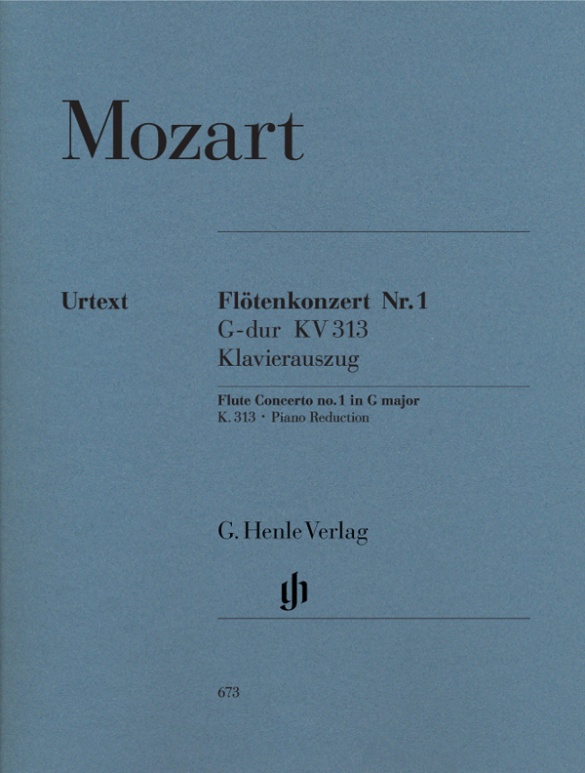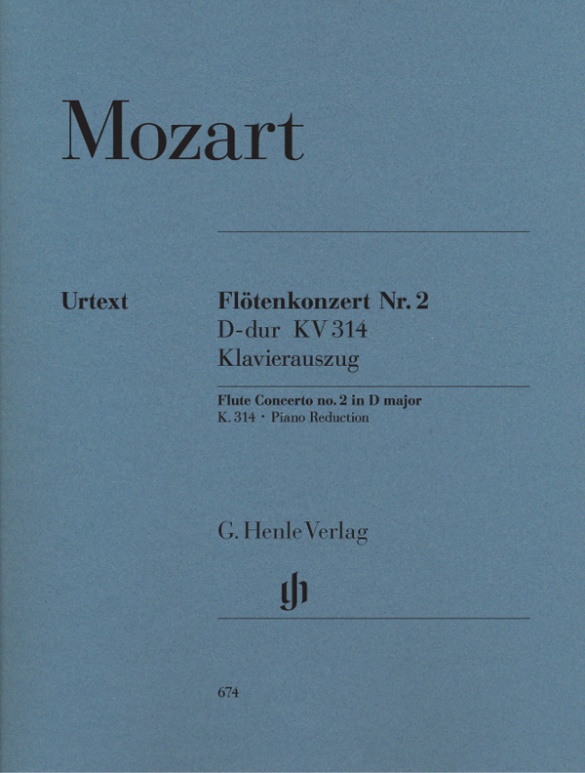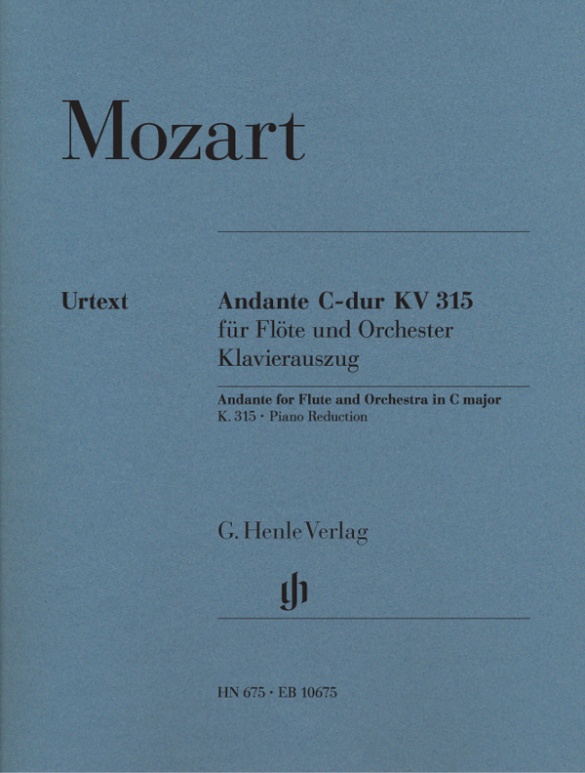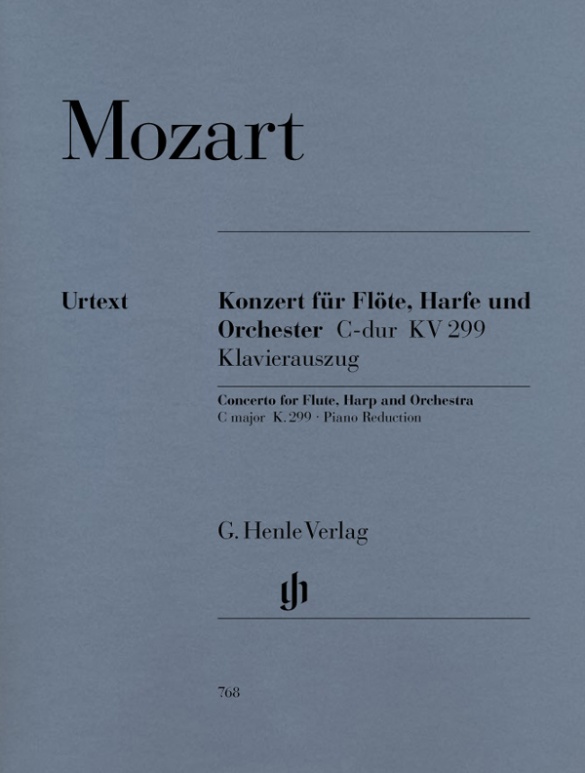Wolfgang Amadeus Mozart
Flute Concerto no. 1 G major K. 313
内容/詳細
作曲家について

Wolfgang Amadeus Mozart
Mozart is one of the few composers to have produced masterpieces in all genres. On the concert tours he undertook in his early years (London, Mannheim, Italy, Paris) he gained many varied musical impressions that he assimilated in his youth and which formed the prerequisite for his later consummate musical language.
| 1756 | Born in Salzburg on January 27, the son of musician and later court composer Leopold Mozart. His early regimented musical education from his father began in 1761, first compositions at age five. |
| 1763–66 | Extended concert tours through various German cities and to Paris, London, Amsterdam, Switzerland. He composes his first sonatas for violin and piano, K. 10–15, dedicated to Queen Charlotte, as well as the first symphonies from London, K. 16 and 19, which show the influence of the works of Johann Christian Bach and Karl Friedrich Abel (the three-movement Italian sinfonia form). |
| 1767 | Premiere in Salzburg of the sacred light opera “Die Schuldigkeit des ersten Gebotes,” K. 35 (written with Michael Haydn and Anton C. Adlgasser), and the intermezzo “Apollo et Hyacinthus,” K. 38. Journeys with his father and sister to Vienna. |
| 1768 | Probably the premiere in Vienna of his Singspiel “Bastien and Bastienne,” K. 50. Composition of his first masses. |
| 1769 | Performance in Salzburg of the dramma giocoso “La finta semplice,” K. 51. |
| 1769–71 | Two tours to Italy; he meets Farinelli, P. Nardini, and Padre Martini, among others, and, on the second trip, Hasse. Premieres in Milan of his opera seria “Mitridate, Re di Ponto” in 1770 and of the festa teatrale “Ascanio in Alba” in 1771. Composition of symphonies and his first string quartet (1770, K. 80). |
| 1771 | Composition of the oratorio “La Betulia liberate,” K. 118, in Salzburg/Italy. |
| 1772 | Premiere of the serenata drammatica “Il sogno di Scipione,” K. 126, for the accession of Salzburg Archbishop Hieronymus Count Colloredo. He receives an appointment as salaried concertmaster of the Salzburg Court Chapel (of which he had been an unpaid member since 1769). Third journey to Italy with his father, premiere in Milan of the dramma per musica “Lucio Silla,” with general success. The final trip to Italy spells the ends of his youthful phase of appropriation; he has tested out all important instrumental genres (symphony, sonata, string quartet) and all the main genres of opera (Singspiel, opera buffa, opera seria, festa teatrale). |
| from 1773 | Composition of string quartets (K. 168–173) under the influence of Haydn, and of symphonies, divertimenti, serenades. He increasingly devotes himself, contingent upon the duties of his post, to liturgical music; several masses are written. Begins to compose violin and piano concerti. |
| 1775 | Premiere in Munich of the dramma giocoso “La finta giardiniera” and the serenata “Il Rè pastore.” Piano sonatas, K. 279–284. |
| 1777 | He vacates his post temporarily to undertaken a promotional tour with his mother to Munich, Mannheim, and Paris. |
| 1778 | Composition of the “Paris” Symphony in D major (K. 297). In Paris he experiences the quarrel between the proponents of Gluck and those of Piccinni. Publication of violin sonatas. |
| 1779 | Resumes his duties in Salzburg, as court organist. Coronation Mass in C major. |
| 1781 | Premiere in Munich of his tragédie lyrique “Idomeneo,” in which French and Italian elements are synthesized. Journey to Vienna. After his falling out with the Archbishop of Salzburg, he gives up his post, moves to Vienna, and earns his living as a free composer through concertizing and giving music lessons. His last great period of creativity begins. |
| 1782 | He becomes acquainted with the works of Bach and Handel through Baron van Swieten; after this he arranges Bachian fugues and incorporates the “learned style” (fugues and counterpoint) into his works beside the “galant style” (e.g. in the String Quartet in G major, K. 387, in 1782; Piano Sonata in F major, K. 533, in 1786; the Jupiter Symphony, K. 551, in 1788; “Die Zauberflöte” (“The Magic Flute”), and the Requiem in D minor, K. 626, both in 1791). Premiere in Vienna of his Singspiel “Die Entführung aus dem Serail” (“The Abduction from the Seraglio”). Composition of the Haffner Symphony in D major, K. 385. |
| 1783 | Mass in C minor, K. 427; Linz Symphony in C major, K. 425. |
| 1784 | Hunt Quartet in B-flat major, K. 458. |
| 1785 | Premiere in Vienna of the oratorio “Davide penitente,” K. 469. “Dissonance” Quartet in C major, K. 465. |
| 1786 | Premiere of the comedy with music “Der Schauspieldirektor” (“The Impresario”), K. 486, which Salieri’s competing work “Prima la musica e poi le parole” (“First the Music and Then the Words”) bests. Premiere in Vienna of the opera buffa “Le nozze di Figaro” (“The Marriage of Figaro”), whose extended action-packed finales form a highpoint of opera buffa. Prague Symphony in D major, K. 504. |
| 1787 | Serenade in G major (“Eine kleine Nachtmusik”), K. 525. He is named imperial and royal chamber composer. Premiere in Prague of the dramma giocoso “Il dissoluto punito ossia Il Don Giovanni,” a synthesis of serious and comic opera. |
| 1788 | Composition of the large Symphonies in E-flat major, K. 543; G minor, K. 550; and C major (Jupiter Symphony), K. 551. Clarinet Quintet in A major, K. 581. |
| 1790 | Premiere in Vienna of the dramma giocoso “Così fan tutte ossia La scuola degli amanti.” |
| 1791 | Premiere in Prague of the opera seria “La clemenza di Tito” and in Vienna of the Singspiel “Die Zauberflöte.” Clarinet Concerto in A major, K. 622. The Requiem remains unfinished. Dies in Vienna on December 5. |
校訂者や運指担当者について
András Adorján (校訂)
András Adorján was born in Budapest, grew up in Denmark and has been living in Munich since 1974. Dentist diploma in Copenhagen 1968. Flute studies with Aurèle Nicolet and Jean-Pierre Rampal. Laureat of international flute competitions and principal flutist of important european orchestras.
From 1987 professor in Cologne, since 1996 in Munich. With more than 100 recordings and as editor of a unique and extensive encyclopedia „Lexikon der Flöte“ he is today one of the most prominent flutists of his generation.
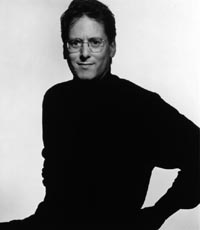
Robert D. Levin (カデンツ)
製品安全に関する情報

G. Henle Verlag
製品の製造元に関する情報はこちらでご覧いただけます。G. Henle Verlag
Forstenrieder Allee 122
81476 München
info@henle.de
www.henle.com
So sind die Texte der neuen Klavierauszüge von Bachs a-Moll-Violinkonzert und Mozarts G-Dur-Flötenkonzert über jeden Zweifel erhaben. Zuverlässig geben die Solostimmen Auskunft darüber, "was uns die Quellen erzählen" und bieten mit dem Klavierauszug der Orchesterbegleitung die solide Basis fürs häusliche und professionelle Studium.An András Adorjáns makelloser Ausgabe sind vor allem die stilsicheren Kadenzen und Eingänge des auch als Hammerflügel-Spezialist ausgewiesenen Mozart-Forschers Robert D. Levin hervorzuheben.
Neue Musikzeitung... Les éditions Henle sortent une nouvelle collection comprenant les grandes pages de la concertante du répertoire avec la partie orchestrale réduite à un piano. ... Cette collection comporte les doigtés pour la partie soliste, une présentation claire (avec un effort particulier concernant les tournes) ainsi qu'une introduction trilingue.
Ecouter voirI would definitely recommend this edition for both teaching and performing -- it is unfussy and refreshing.
Pan magazineFinalemente anche la grandi case dell'editoria musicale si stanno accorgendo dell'imprtanza del repertorio Flautistico, così anche la Henle Verlag, la grande casa editrice di Monaco, un punto di riferimento tra le edizioni cosí dette "Urtext", si èlanciata nel mondo del flauto. ... Poco c'è da dire sulla qualità dell'edizione che, come è abituale per la Verlag, è di altissima qualitsà, sia per la leggibilità della parte, la qual cosa non è assolutamente di secondaria importanza, sia per la cura dell'edizione critica che segue i più severi dettami di un'edizione critica: estrema attendibilità verso l'autografo e la prima edizione, ...
FaLaUt... Die Kadenzen und Eingänge von Robert D. Levin sind im Mozartstil geschrieben, Sprünge bzw. Anregungen zu einer eigenen Version sind gegeben. Das Notenbild ist sehr deutlich und übersichtlich. ...
Flöte aktuell... L'édition, comme toujours chez la firme Henle, est extrêmement soignée et d'une clarté exemplaire. ... Enfin, les cadences sont proposées par Robert Levin dans une conception didactique intéressante. Elles sont de dimensions un peu plus restreintes que les grandes cadences (Rampal, Marion, Taffanel...) auxquelles nombre d'entre nous sont habitués, mais elles s'attachent surtout à mettre en valeur des sections typiques d'improvisation, instruisant ainsi l'interprète sur les cellules mélodiques et rythmiques à choisir et le traitement à leur apporter. Ces cadences - ou plutôt ces exemples de cadences - sont donc en quelque sorte "à géométrie variable". Il est possible de les construire ou simplement de s'en inspirer à sa guise. La démarche vaut la peine d'être soulignée et contribue à faire de ces éditions un matériel didactique de premier ordre.
La Traversière... In this new edition the music is laid out so the entire exposition can be played without a page turn, and similar care was taken with the piano score. The modest articulations are reminiscent of the Baerenreiter editions of Bach and Mozart. This edition includes two cadenzas by Robert D. Levin in the style of the Mozart, with rehearsal numbers marked in the cadenzas.
Flute Talk ... Der Klavierauszug erscheint für den einigermaßen versierten Laien bewältigbar; die Eingänge und Kadenzen von Robert D. Levin "sollen durch ihre Variabilität Anregung zu Improvisation und eigener Komposition bieten".
Das LiebhaberorchesterIn erster Linie für Probenzwecke oder für Vorspiele im engeren Rahmen dienen die Klavierauszüge mehrerer Instrumentalkonzerte. Daß auch derartige Funktionsmusikalien vom Henle-Verlag mit aller Sorgfalt betreut werden - die Einrichtung der Seiten nach dem Gebot praktikabler Wendestellen mag dafür als ein Beleg dienen -, gereicht ihm zur Ehre. Die Ausarbeitung der Klavierpartie durch Jan Philip Schulze (KV 315,447) und Siegfried Petrenz (KV 219,313,314) geben die musikalische Substanz in wünschenswertem Maße wieder, ohne je überfüllt zu wirken oder gar pianistischer Selbstdarstellung zu frönen. ... Robert D. Levin gestaltet technisch anspruchsvolle und stilistisch einfühlsame Soloauftritte. Wer sich als Spieler nicht auf die eigene Improvisationsgabe verlassen will oder kann, der sollte sich getrost dieses Materials bedienen. ... Alle Ausgaben enthalten Vorworte mit knappen Abrissen der jeweiligen Entstehungs- und Überlieferungsgeschichte; bei den Kammermusikwerken sind außerdem Bemerkungen zur Textgestalt beigegeben. Fazit: Diese "taubenblauen Urtexte" sollten den Weg auf viele Notenpulte finden!
Acta Mozartianaおすすめ
autogenerated_cross_selling
このタイトルを含む他の版
このタイトルを含む他の版


